Shortly after a big-brush performance in New York on May 1, 1965, with Alechinsky, Ting, Sonderborg and others, Nankoku hurriedly headed to Europe (May 5). After his one-man show at Mi Chou Gallery in January, he began to work vigorously toward his activities of calligraphy in Europe. Although overseas travel was liberalized (in 1964), there were serious difficulties in the permission of the Japanese government and complicated negotiations with the other country, since the purpose of his travel was not for sightseeing but for lectures at public institutions and universities, as well as cultural and artistic activities.
Preparing for a travel to Europe in order to give a lecture
Nankoku asked A.M. Hammacher, Director of the Kröller Müller Museum, the Netherlands, about the possibility of lectures in the Netherlands, and he was in close contact with Mrs. Irmtraud Schaarschmidt-Richter of West Germany. The exhibition of his one-man show in the U.K. suggested from Victor Pasmore, British painter, and the invitation to Italy of his friend, Nobuya Abe, and based on these conditions, Nankoku made up his mind to give lectures in the Netherlands, Germany, the United Kingdom, and Italy. Then Nankoku applied to the Information and Culture Bureau in the Ministry of Foreign Affairs in Japan for travels through Europe in order to give lectures from April to June.
The Information and Culture Bureau in the Ministry of Foreign Affairs contacted the Japanese Embassies in each country for the possibility of a lecture within this schedule, and the Japanese Ambassador to the Netherlands responded that it was possible to give a lecture at “the Netherlands-Japan Association” (Nederlands-Japanse Vereniging). The Ambassador to the U.K. answered that the Royal College of Art would accept the lecture. The Ambassador to Italy responded that it was possible to give a lecture at “the Institute of Japanese Culture” by Nankoku's application. The Ambassador to Germany negotiated with museums and universities in Cologne(Köln) and Düsseldorf, but it was difficult to find it within this schedule.
Because of delays in answers and tight schedules, Nankoku judged that it was impossible to hold his one-man show in each country, and negotiated with the Information and Culture Bureau about schedules, focusing on the introductions of lectures and films, and simple demonstrations. It was just before his departure that the schedules and programs were finally decided through the intermediation of Hammacher, the hard efforts of the Ambassador to the U.K., and the energetic introduction of Mrs. Schaarschmidt-Richter, and others.
Ⅰ. The Netherlands
First, Nankoku went to Leiden, the oldest university-city in the Netherlands, and gave a lecture on Oriental calligraphy from 8:00 p.m. to 11:00 p.m. on May 7 at the National Museum of Ethnology (Rijksmuseum voor Volkenkunde). The Museum of Ethnology was founded in 1837, but it was the start in the establishment that Philipp von Siebold had presented his enormous collections to the Royal Family. These collections were the literary and ethnological collections of more than 5,000 items gathered by Siebold during his stay in Japan (1823-1828), including a map of Japan, and other collections, such as mammal specimens 200, birds 900, fishes 750, reptiles 170, invertebrate specimens 5000 or more, plants 2000 species, plant specimens 12000. The lecture was held under the co-sponsorship of the Museum and the Netherlands-Japan Association through the intermediation of A. M. Hammacher, Director of the Kröller Müller Museum. The Netherlands-Japan Association had the head office in Haag (Den Haag, the de facto capital with capital functions).
An airmail for Shoha on May 19, "I was in the Netherlands for only three days, but I felt very comfortable. …The members of the embassy took care of me kindly, and the lecture was also a great success. …A lecture at the Netherlands-Japan Association was called off (because the day was The Remembrance Day, “Dodenherdenking” (* 1) and Japan had been also an enemy country at that time). The audience on this day joined the lecture of the Museum of Ethnology later, and the honorariums were also awarded separately by both organizations, so they were about $70. After all, it will be the highest allowance as a lecture of Europe.
On May 8, before heading to England, the scene that he was enjoying a tour of the famous Tulip Garden in the Netherlands was viewed on the films.
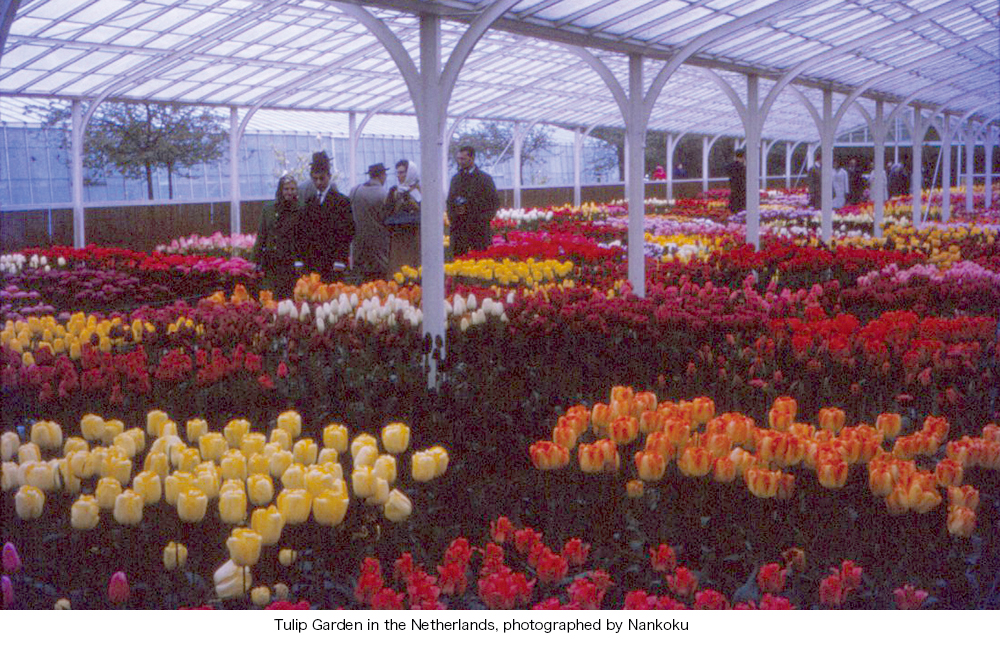
Ⅱ. The United Kingdom
Bath Academy of Art
On the evening of May 8, he arrived in London, the U.K., to prepare for a lecture and demonstration at Bath Academy of Art in Corsham, Wiltshire, from May 10. Bath Academy of Art is a famous special school in the U. K. that instructs painting and sculpture classes, and this art school was intactly based on the ruins of a 15th-century mansion of a noble. He was invited by Clifford Ellis, principal of this school, an engraver and painter. Ellis was introduced to Nankoku by James Kirkup, lecturer of literature and poet living in Japan(*2).
Schedule
May 10 | ① 10:00 a.m. to 1:00 p.m. |
11th | ① ② ③ |
12th | After finishing ① ②, return to London by train. |
The students of ① and ② classes were each separate group, for above three days. Each of ① and ② held about 30 students and ③ held about 80 students. The students had a good reputation, but Nankoku complained about the forced schedule and the treatments of the school.
Also, the airmail for Shoha, dated May 19, "... here, I had a bad time of giving lectures eight times everyday. I was really tired in mind and body. …I will be probably awarded about £30(30 pounds) or $80. In addition, I’m not paid yet. So I have urged the embassy to be paid quickly. …The chief professor only followed me at the first time, and even then, he did not introduce me, then he seemed to say that I may give lessons arbitrarily without permission. …The professor had never followed me from the second time. He left me alone.”
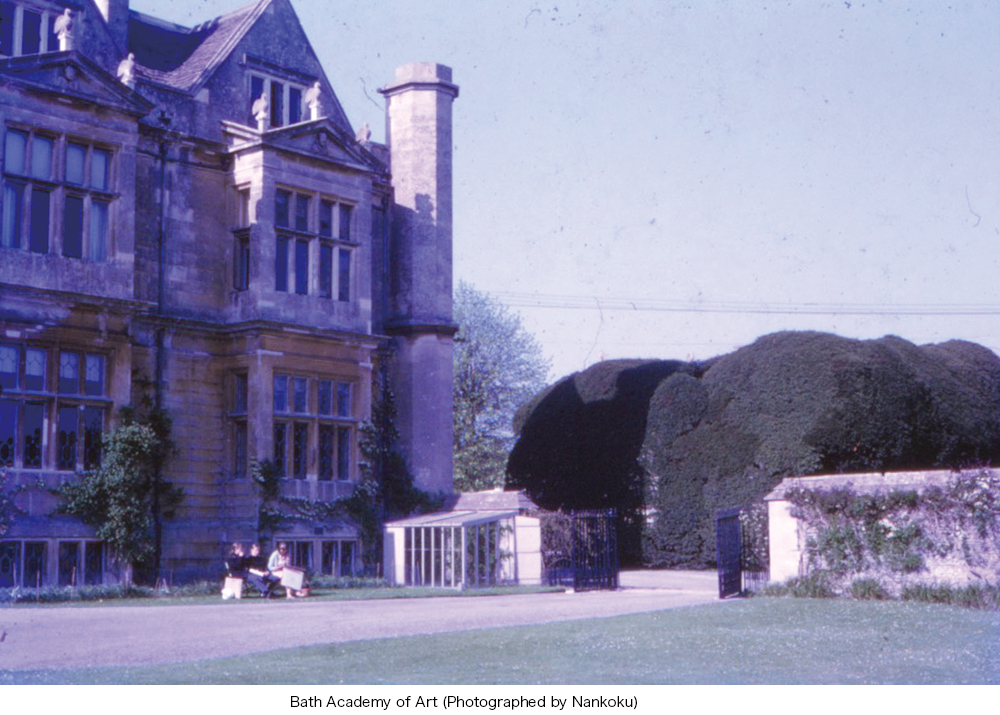
Institute of Contemporary Arts
On May 13, Nankoku gave a lecture at the Institute of Contemporary Arts on Dover Street in London ( abbreviation ICA). ICA was conceived in 1947 by Sir Herbert Edward Read as a free playground for challenging the traditional arts and was the stronghold for the latest experimental avant-garde art movement founded by Roland Penrose, founder of Surrealism in the U.K. In the lecture there, Mr. Odaka, the First Secretary of the British Embassy, introduced Nankoku, and his lecture and demonstration were also great successes by an ardent audience.
A letter for Shoha on may 19, Nankoku rarely criticized the British civilization. "The British Empire still believes that only its own country is good – generally speaking - a venerable and respectable country, and so leave this country as it is. In other words, it’s typical conservatism. I feel that I saw the future of the old great country which is declining. I bothered to come here but never come again, so I'll take a close look at this country in 10 days and contact with people as much as possible.
British Museum
The next lecture was scheduled for May 25, and since more than 10 days were available, Nankoku tried to research the collection of thin pieces of wood (木簡, a strip of wood) of the British Museum(* 3), introduced by a scholar of the British Museum whom he had made the acquaintance with. He had wanted to research them for a long time. The negatives of a strip of wood (about 25 pieces) which his father Tenrai had ordered from this Museum 40 years before were lost at Shogaku-in during the War, and only the bad printing photographs that Tenrai gave to Yasushi Nishikawa were left. He wanted to investigate them and get the unpublished printing photographs of the strip of wood in the world and return home. So he took a day to investigate all the thin pieces of wood at the Museum, but what made Nankoku excited was that he saw "the rubbing of Monument of Ketoji in Tang Dynasty " for the first time. “Among Japanese calligraphers, I'm the only one to have see it," he said excitedly in an airmail dated June 2.
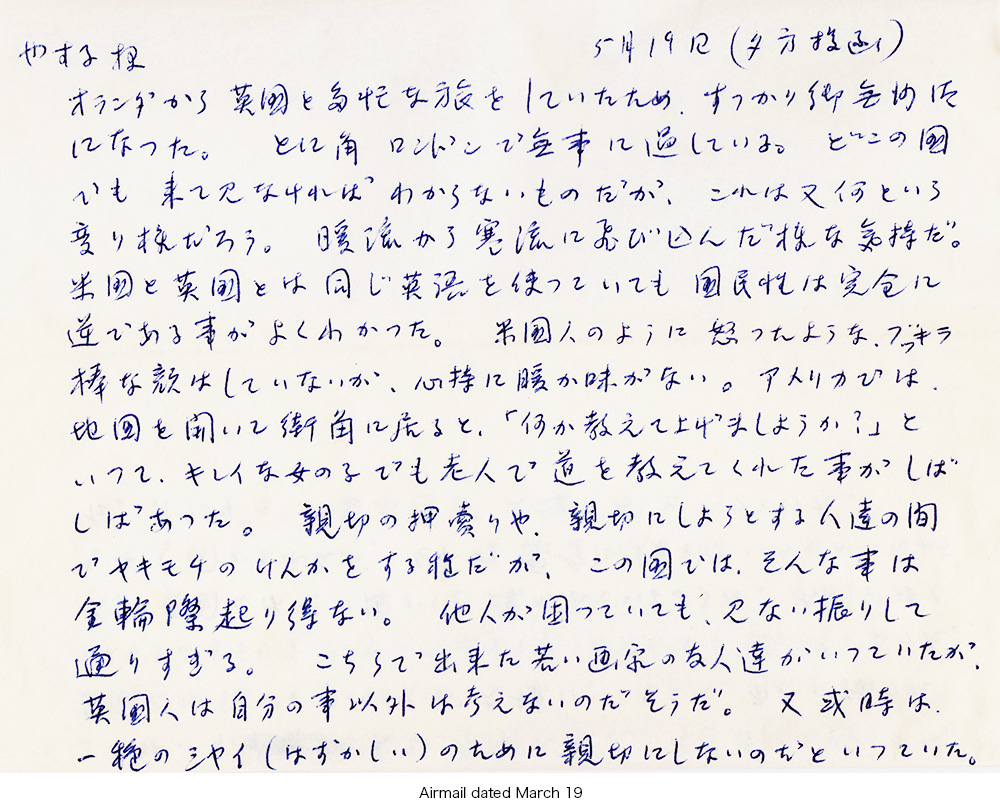
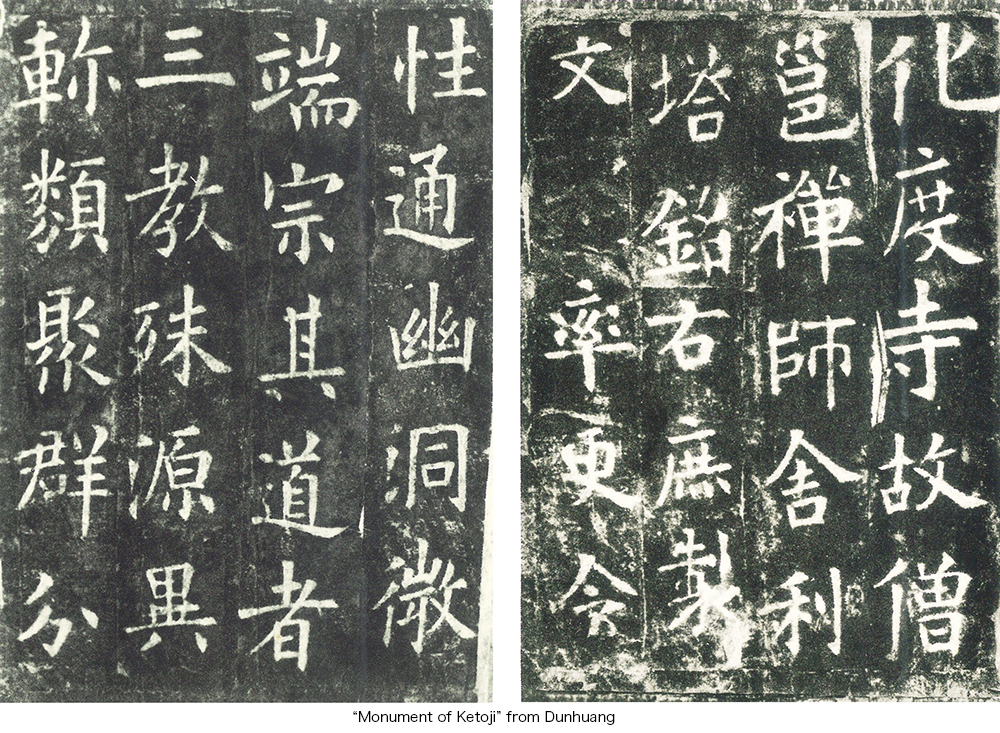
During this time, Nankoku was invited to the home of Victor Pasmore, British abstract artist he had known on his second visit to the United States, and also he was asked to give a lecture at a college at Oxford University.
Royal College of Art
On May 25, he gave a lecture at Royal College of Art (the Royal Academy of Arts ). It was the only national art college in London, and only this college awarded both master’s degree and doctor’s degree in the world. It was founded as the Government School of Design in 1837. In 1896, the name of the school changed the present name, the Royal College of Art, emphasizing the practical skills of art and design. RCA played an important role in the birth of modern British sculpture in the 1920s. It also contributed to the development of Pop Art in the1960s. There was Henry Moore, renowned sculptor, among the graduates, and there was painter Francis Bacon, as a teacher.
His lecture was well received, but there was no reward.
Ⅲ. Universitas and Collēgium
Originally, “University” in English, which means an institution for the promotion and dissemination of advanced learning, has an etymology in “universitas” in Latin. Universitas means "the whole, aggregate, entirety", from which the meaning of "the organization, community, union" was derived. From late 12th century to the 13th century, the oldest medieval university was established in Bologna, the free city-state of Italy in medieval Europe. At first, the secular law school in Bologna was a small form of "association" that gathered around teachers. However, through trade and economic activities, students from many parts of the world gathered in the large city, and students formed groups for each place of birth, and formed an autonomous organization, “universitas”. Students protected themselves against harm from churches, nations, and cities, and contracted with teachers. Students organized for themselves the education they needed. Because they were free from churches, nations, and autonomous cities, it happened that teachers and students migrated to other cities in groups. The university did not have a fixed campus, and classes were held wherever a place could be used, such as a church or private residence. The university was not a physical place, but an aggregate of individuals connected to each other as a union of students’ guild and teachers' guild.
College is also derived from the Latin collēgium (collēga, colleague +-ium, gathering). In the Middle Ages, it meant primarily guild-like organizations, but soon, like “universitas”, from which the university was originated, it came to mean only the organization of students and teachers for the purpose of communicating academic knowledge. It originated in the dormitories or boardinghouses of the medieval Universities of Paris, Oxford and Cambridge. At first, these dormitories were established with the donations of monasteries and nobles, but in the 13th century they gradually became organized as legal corporate organizations, and became places of education and research where teachers and students could live together. In England, it developed as a unique dormitory education, particularly along with a tutor system that senior students tutored junior students.
In America, in the 1600s, Puritans from Europe came to the East Coast one after another in search of New Continent. Then in 1636, Harvard University was founded, as the first university in the United States. It was still like a small private school, with the main purpose of training pastors. Thus, most of the traditional universities in the United States were born as private universities. After 19th century, more and more immigrants from Europe and Asia increased and pioneered unexplored territory and built ranches and fields. In the process, the state universities were established, that is, they were institutionalized to provide education to all people for practical and professional guidance, including agriculture, in order to support the development of each state. In addition, the urbanization and industrialization advanced in the United States, and the popularization of higher education progressed differently from Europe.
Nankoku experienced the unkindness of educational institutions in Europe, such as British universities, but it seems to carry the historical background of academic freedom and autonomy in university and college. They ensured academic freedom by avoiding excessive intervention of university authorities and power structure in the research and education of teachers. Students also autonomously and independently selected their learning content. Moreover, it seems that the historical background about the reward for teacher is "contract between teacher and student in universitas”, such as providing rewards to teachers when the class serves the purpose of study activities of students and can be conscious of the improvement of their own study, in other words, the contract of reward is the tradition of a community established through free and independent educational relationships,.
Ⅳ. Germany and Italy
Germany
Then, Nankoku left for his next destination, Germany and on May 28, arrived in Frankfurt am Main. In Germany, the warm welcome and kind consideration of Schaarschmidt-Richter and his wife made him comfortable and enjoyable.
University of Heidelberg
On May 29, he went to the University of Heidelberg (Ruprecht-Karls-Universität Heidelberg)(* 4) to see demonstrations of seal engraving (篆刻) by Togyo Matsumaru (* 5 , interpretation by his daughter) and instruction on how to take ink rubbings. Rubbing was a technique that did not exist in Europe and the U. S., so faculty members and participating researchers of the University were eagerly learning how to take ink rubbings. At this time, Togyo Matsumaru took a rubbing from the nameplate at the entrance of KUNSTHYSTORISCES INSTITUT (" Institute of Art History " in the Department of Philosophy).
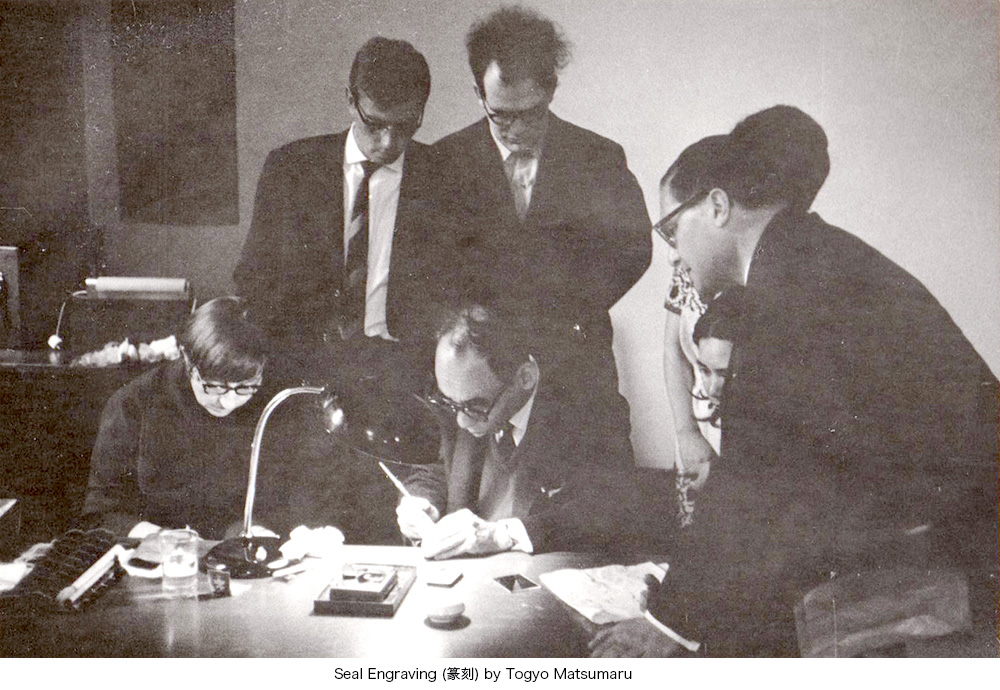
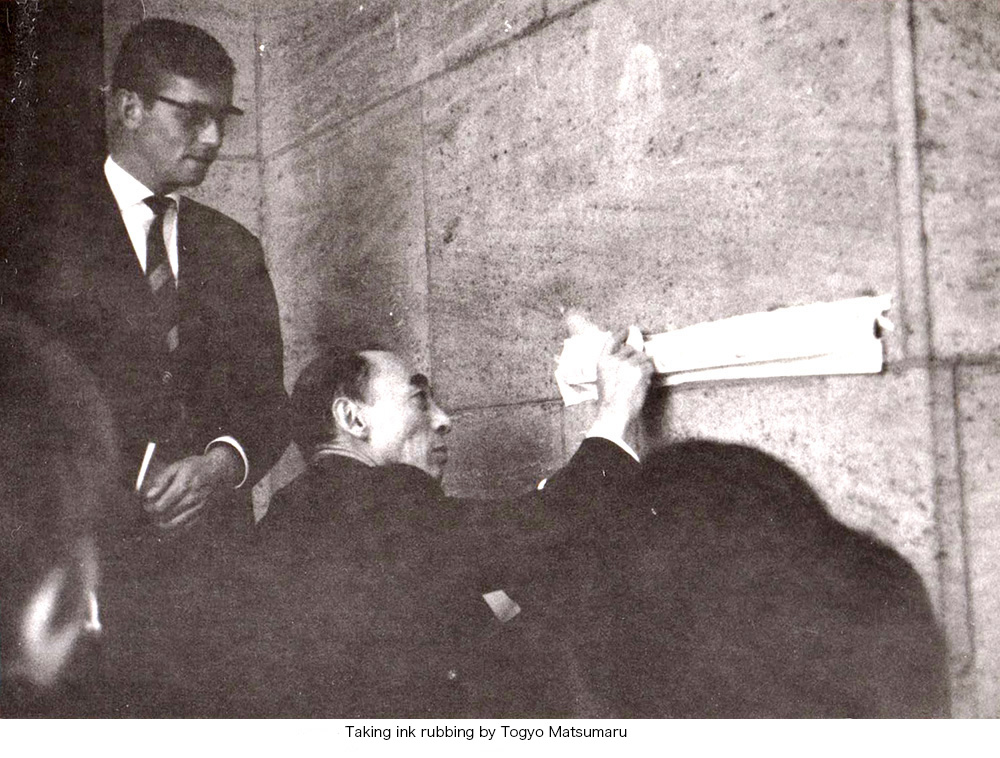
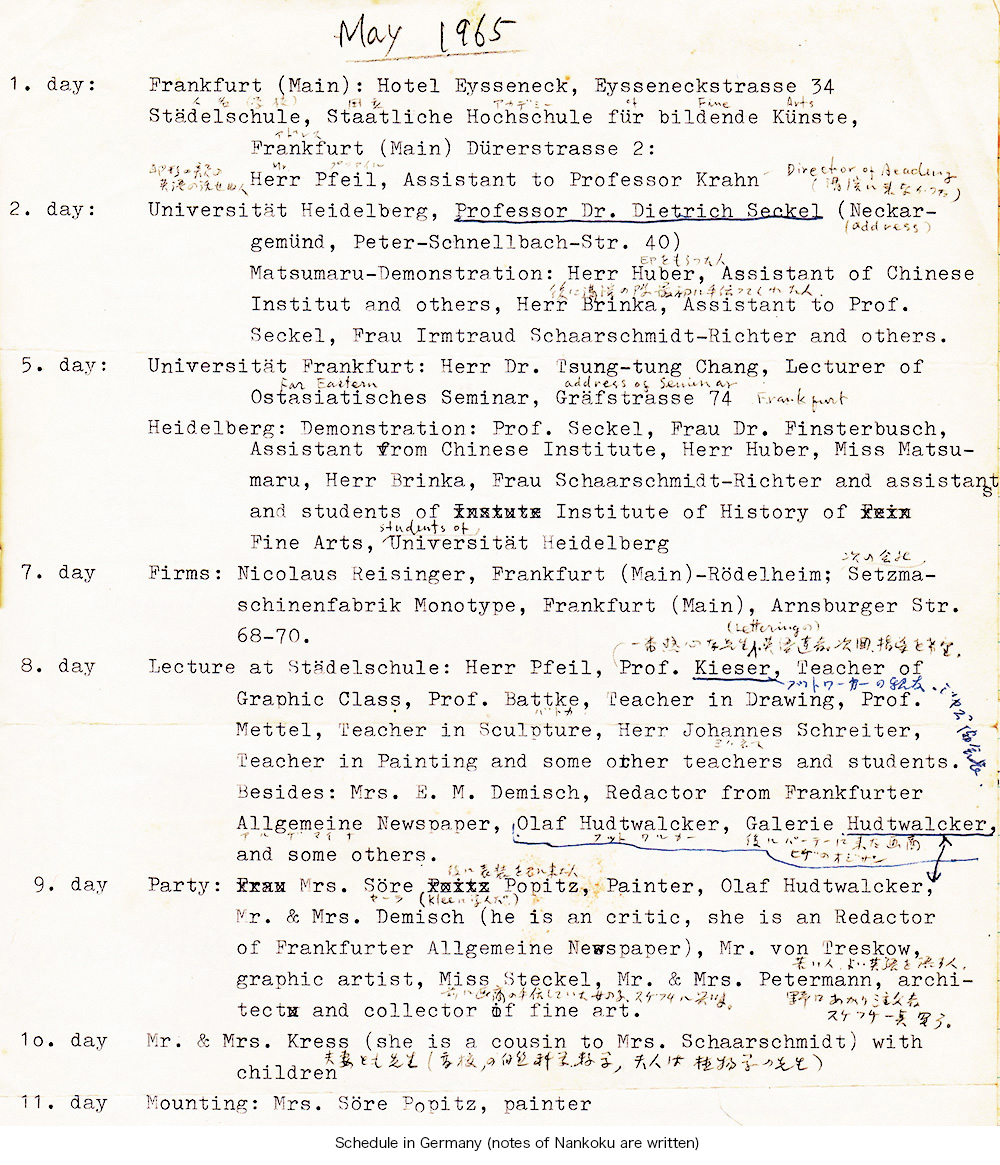
On June 1, Nankoku gave a lecture at the University of Heidelberg. The lecture was accompanied by Mrs. Schaarschmidt-Richter, who helped with the lecture with researchers from Institute of Art History in the University.
Städelschule
Städelschule (National University of Formative Art) is located in Frankfurt am Main, Hessen. This school was an attached institute of the Städel Museum (Das Städel) founded in 1815 by the will of the banker Johann Friedrich Städel, but in 1817 it became the National University of Formative Art and is now the most prestigious Academy of Art in the world. Nankoku gave a lecture at this Städelschule on June 3 (?). The lecture was thronged with a large audience, including professors of painting, drawing and sculpture at Städelschule, editor of Frankfurter Allgemeine Zeitung, and art dealers. The party after the lecture became an open place where he could mix with the above people, and Nankoku was in a good mood.
Later, he was invited to the house of the participants in the lecture, and also he got acquainted with the woman, painter who was a disciple of Klee. She had eagerly watched Nankoku’s mounting of his works.
He left Germany on June 8 for Italy, where he would give his final lecture.
Italy
On June 11, he gave a lecture and demonstration entitled "Art of Calligraphy in the Far East ( L'ARTE DELLA CALLIGRAPHIAIN ESTREMO ORIENTE)" at the Institute of Japanese Culture in Rome, Italy. The director of the Institute of Japanese Culture in Italy was Shigeichi Kure, (1897-1977)(* 6), a great authority of Western classical studies.
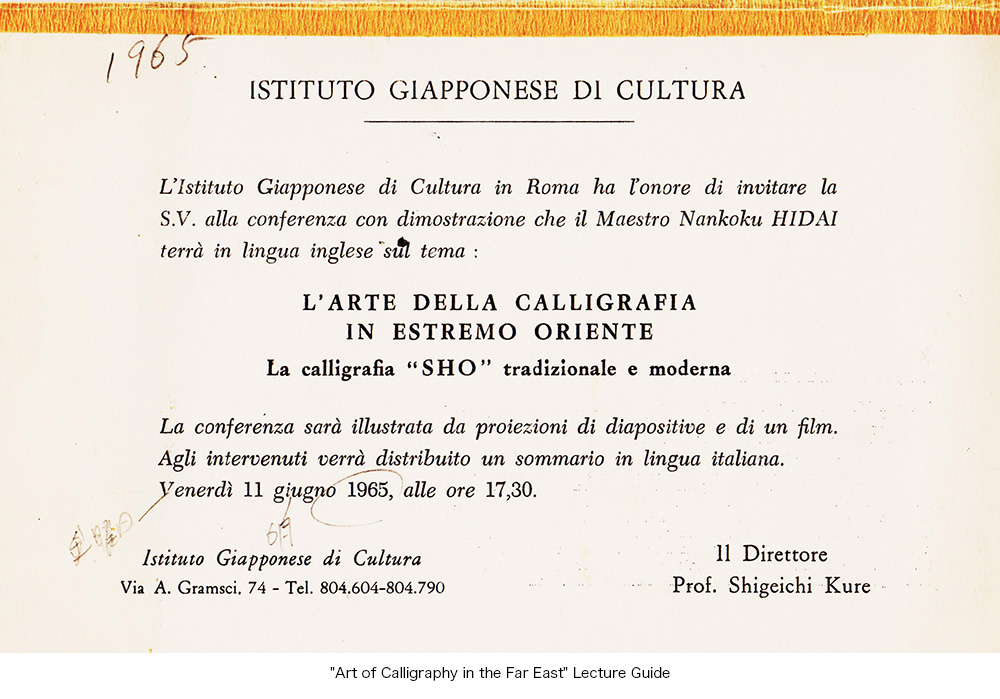
After that, he returned to New York, prepared to return home, such as putting his luggage in order, etc., and returned to Japan in mid-June.
Returning from Expedition to Europe
During about a month, Nankoku visited the Netherlands, the U.K., Germany, and Italy, spending his time on forced schedules for lectures, demonstrations, and other events, and exerting himself to do jobs, so he exhausted himself. What attacked him still more was not that he could get comforted by warm communication with his friends like in the U.S., but that he frayed his nerves about the relationships with Europeans, such as the relationship of seemingly unkind, keeping a person at a distance.
Nankoku's activities to produce works had been decreasing gradually since 1965. There were no works attaching 1965. From 1961 to 1964, Nankoku had pursued intensively the movement of brush lines by "mysterious ink", but an amount of his production activities were suspended. After returning from the U. S. and Europe, Nankoku became keenly aware of the need for education of calligraphy and planned to reopen the Shogakuin Publications which had stopped since the end of the War. In addition, while the Publications were prepared, he had to improve the technology of the Yokohama Precision Plate-Making Company in accordance with the new era, and all efforts were put into improving the printing accuracy.
In April 1965, a few sketches for a test of printing plate were only left in New York.
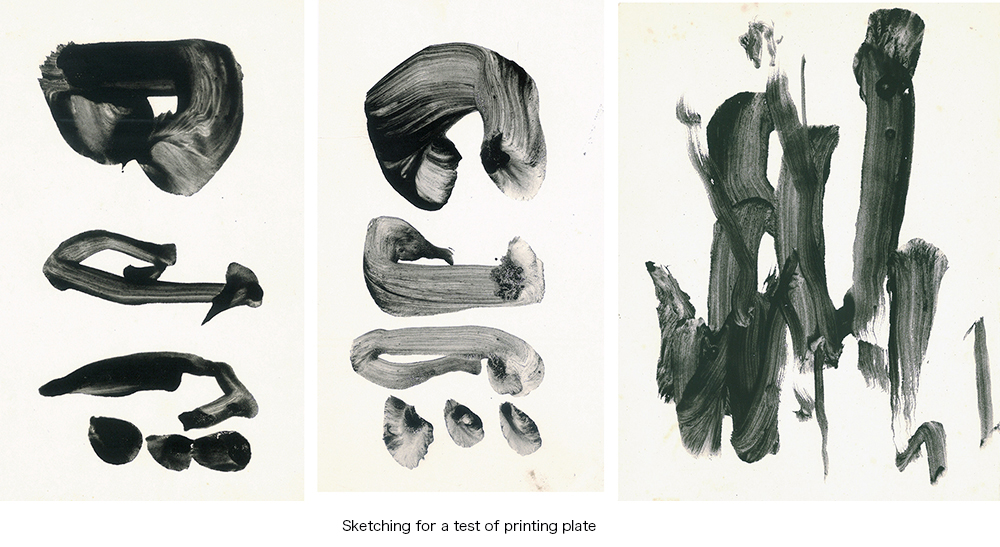
* 1: The Remembrance Day
Every year on May 4, the Netherlands offers a silent prayer for two minutes from 8 p.m. in mourning for soldiers and citizens who lost their lives in the Netherlands and abroad in World War II and by the activities to maintain international peace. In order to gain abundant oil resources in the Dutch East Indies (the center is Java), the Empire of Japan made a surprise attack on Java with parachute troops, invaded the island and defeated the Dutch East Indies Army. The Allied forces in Java surrendered, and 82,618 soldiers were taken prisoner in Java, 16,219 of whom were soldiers of the Dutch East Indies Army. The Netherland became one of the most anti-Japanese countries in Europe after World War II, partly because of the Japanese treatment of prisoners of War and partly because of the loss of the Netherland’s colonies.
* 2: James Kirkup
James Falconer Kirkup (1918–2009) was an English poet and playwright. Graduated from University of Durham. From 1959 to 1961, the lecturer in English Literature, Tohoku University. In 1963, he visited Japan again and taught at Japan Women's University and Nagoya University, etc. In 1964, he won Japan Pen Club Literary Award commemorating the Tokyo Olympic for his series of poems "Japan by the Sea". He had deep relationship to Japan, and his writings were widely adopted in English textbooks at high schools and universities in Japan.
* 3: British Museum
It is one of the largest museums in the world and collects about 8 million art objects, books and loot of all ages and all over the world. Opened in 1759 (established in 1753). Many of the collections were from the colonies of British Empire, including the Sculptures of the Parthenon Temple in Greece (Elgin Marbles). Today, there are often the movements to return the collections. The British Library was first attached as the British Museum Library. The Collections of Dunhuang of the explorer Stein are famous for collection of manuscripts, paintings, and relics from China and Central Asia.
* 4: University of Heidelberg
A comprehensive university in Heidelberg, Baden-Württemberg, Germany. Founded in 1386, it is the oldest university in Germany. Hegel in philosophy, Max Weber in sociology, and others, taught in it. It has produced 56 Nobel prize winners.
* 5: Togyo Matsumaru (Nagasaburo 1901-1975)
Seal engraver (篆刻家). He was very committed to the research of Ancient Copper Seal in Qin Han. He was strongly influenced by Deng Shiru, Zhao Zhiqian, and Wu Changshuo, and learned their seal engravings by himself. In addition, he established the Chijyou-in Company to train the younger generation. He founded Hakko-sha and published the calligraphy and book of seals of Chinese in Qing dynasty. Awarded the Special Award of the Toho Calligraphy Association. He was a councilor of the Japan Exhibition of Fine Art and a member of the advisory committee of the Mainichi Calligraphy Exhibition. His collected stamps are stored in the Seal Engraving Museum in Furukawa City.
* 6: Shigeichi Kure (1897~1977)
After graduating from Tokyo Imperial University, in 1926 he studied ancient Greek and Latin literature in Europe. In 1949, he became a professor at the Faculty of Liberal Arts at the University of Tokyo, and from 1950 to 1956, he became the first chairman of the Japan Society of Western Classical Studies. After retiring from the university, he served as director of the Institute of Japanese Culture in Rome in 1963. The translations of “Iliad” and “Odyssey” (Iwanami Bunko) have been read for a long time.